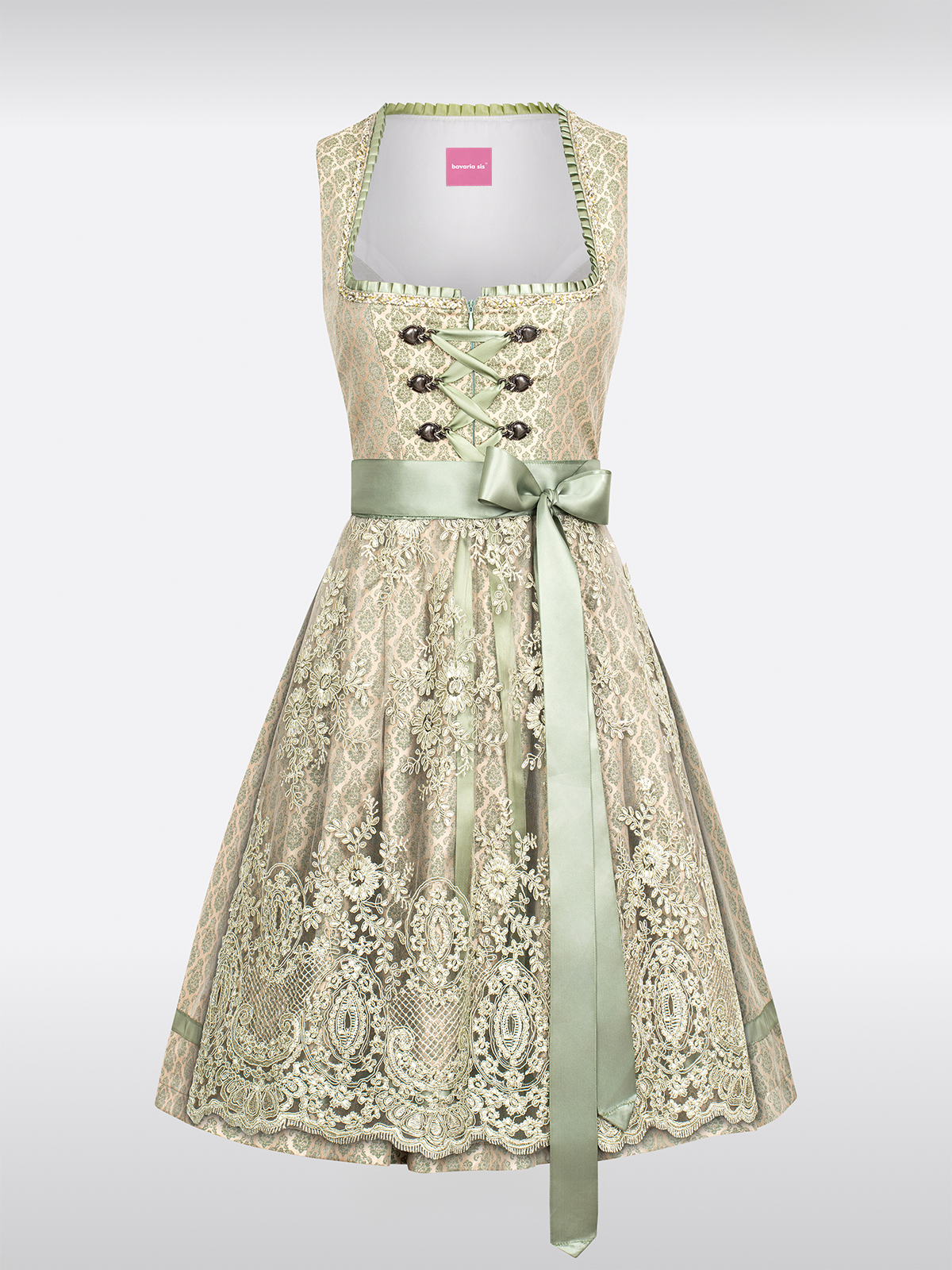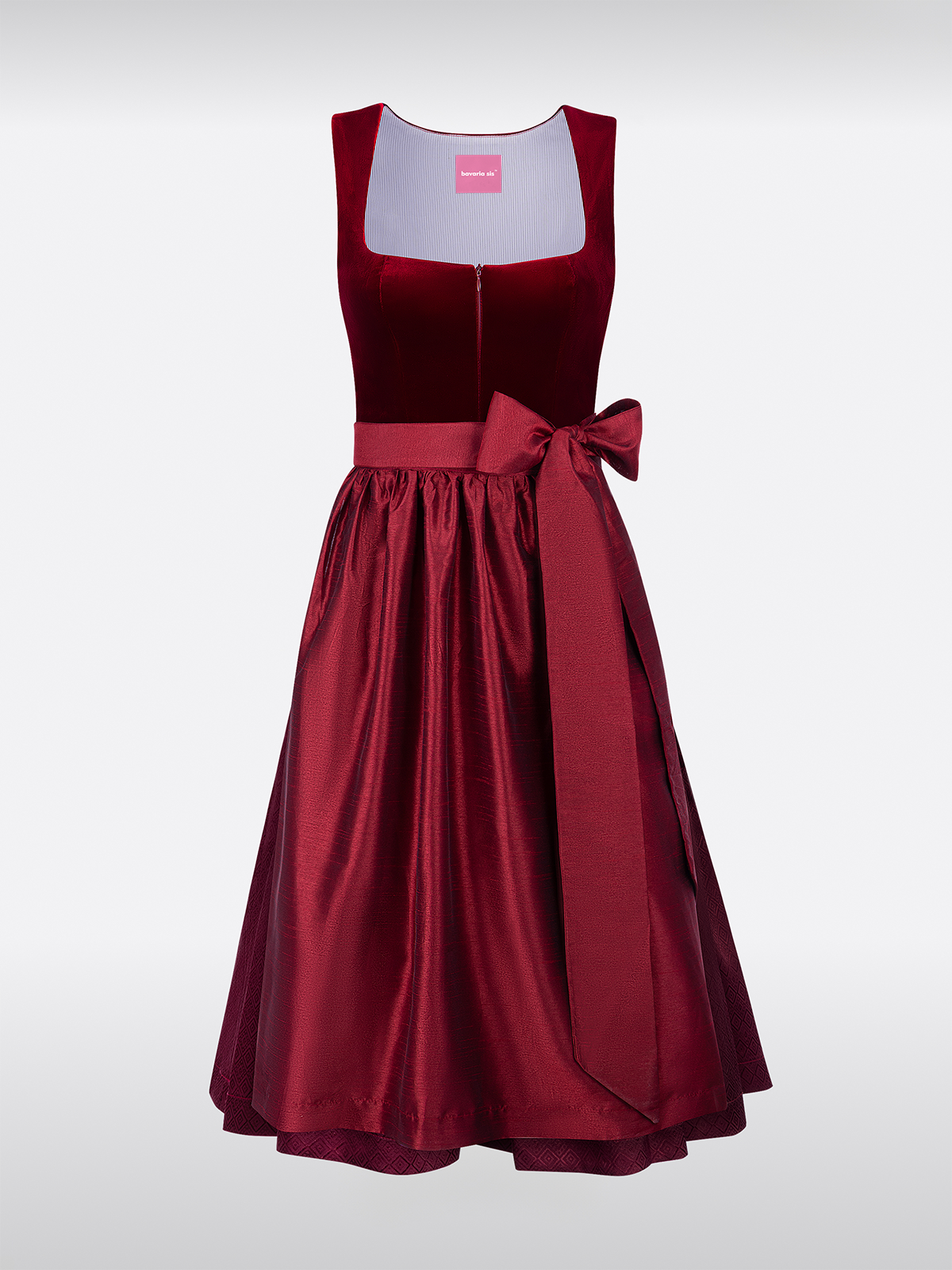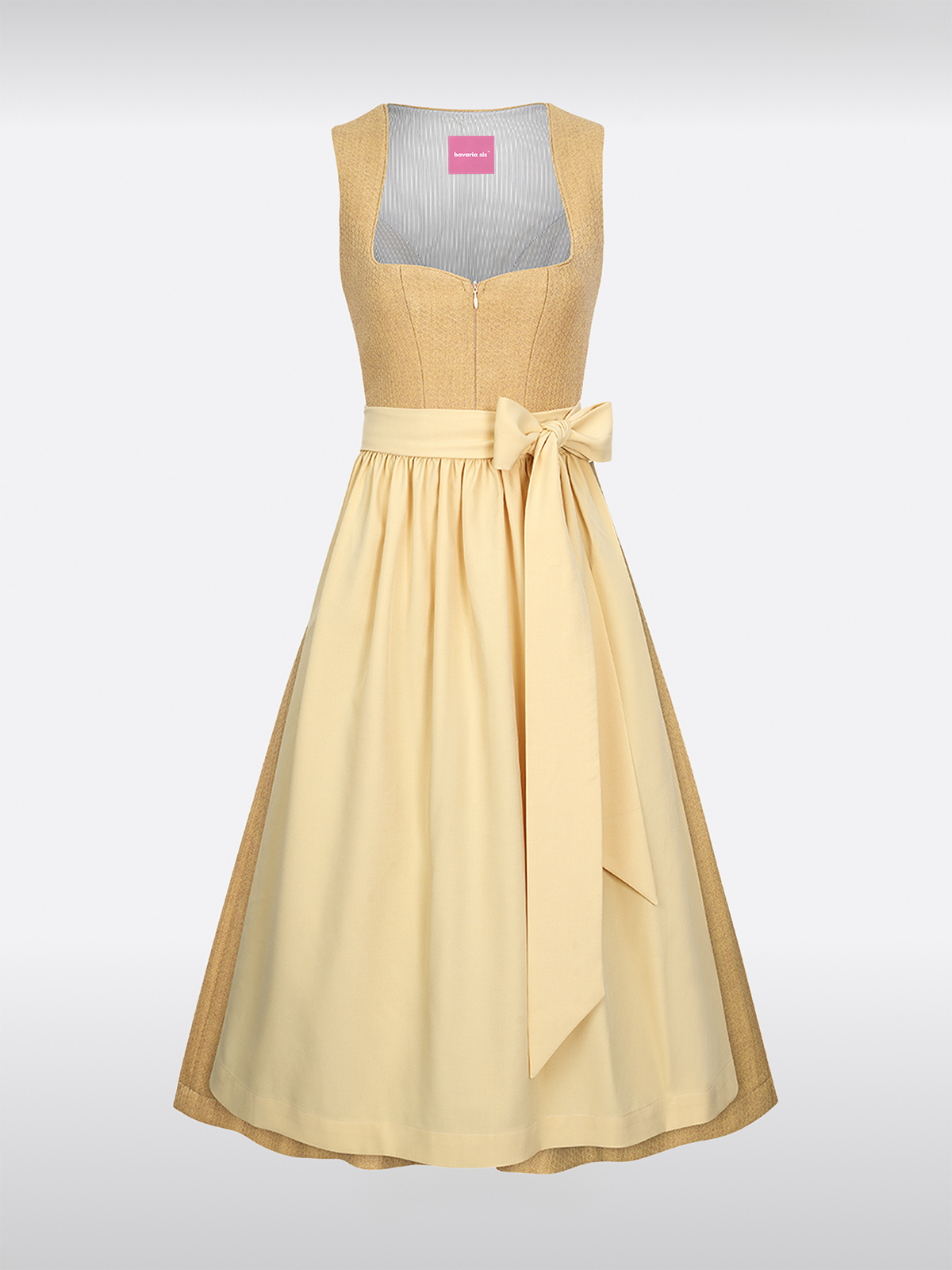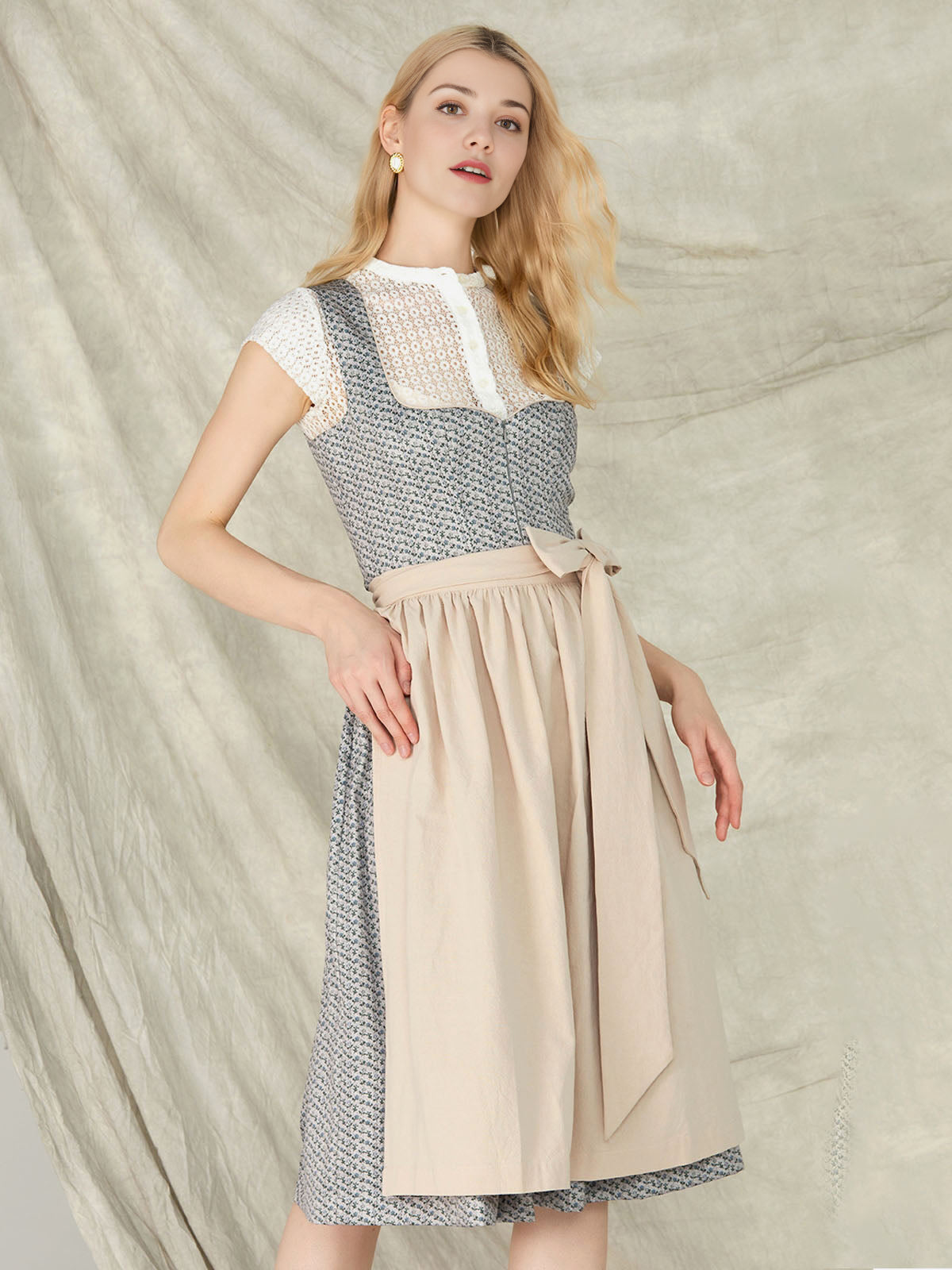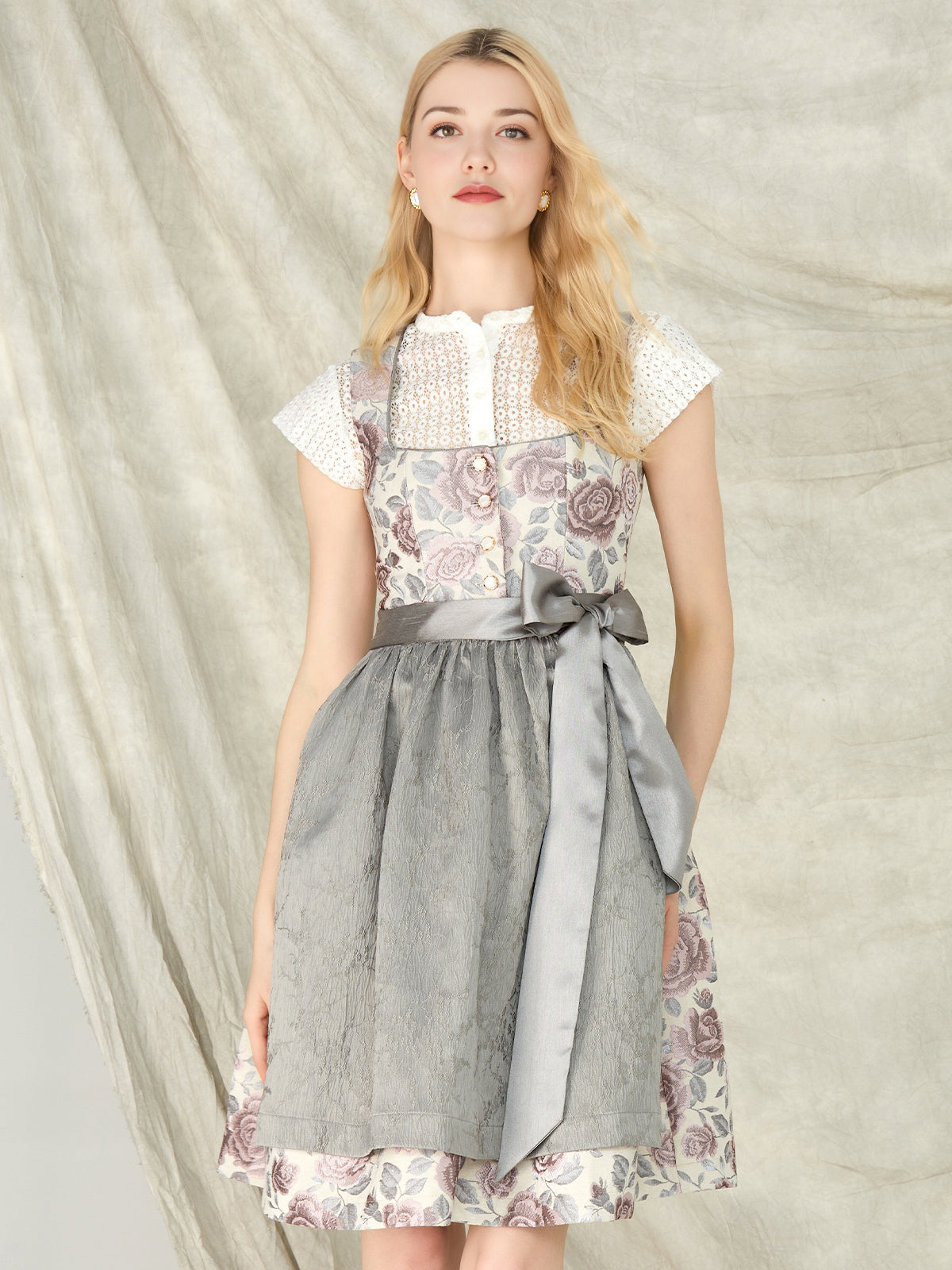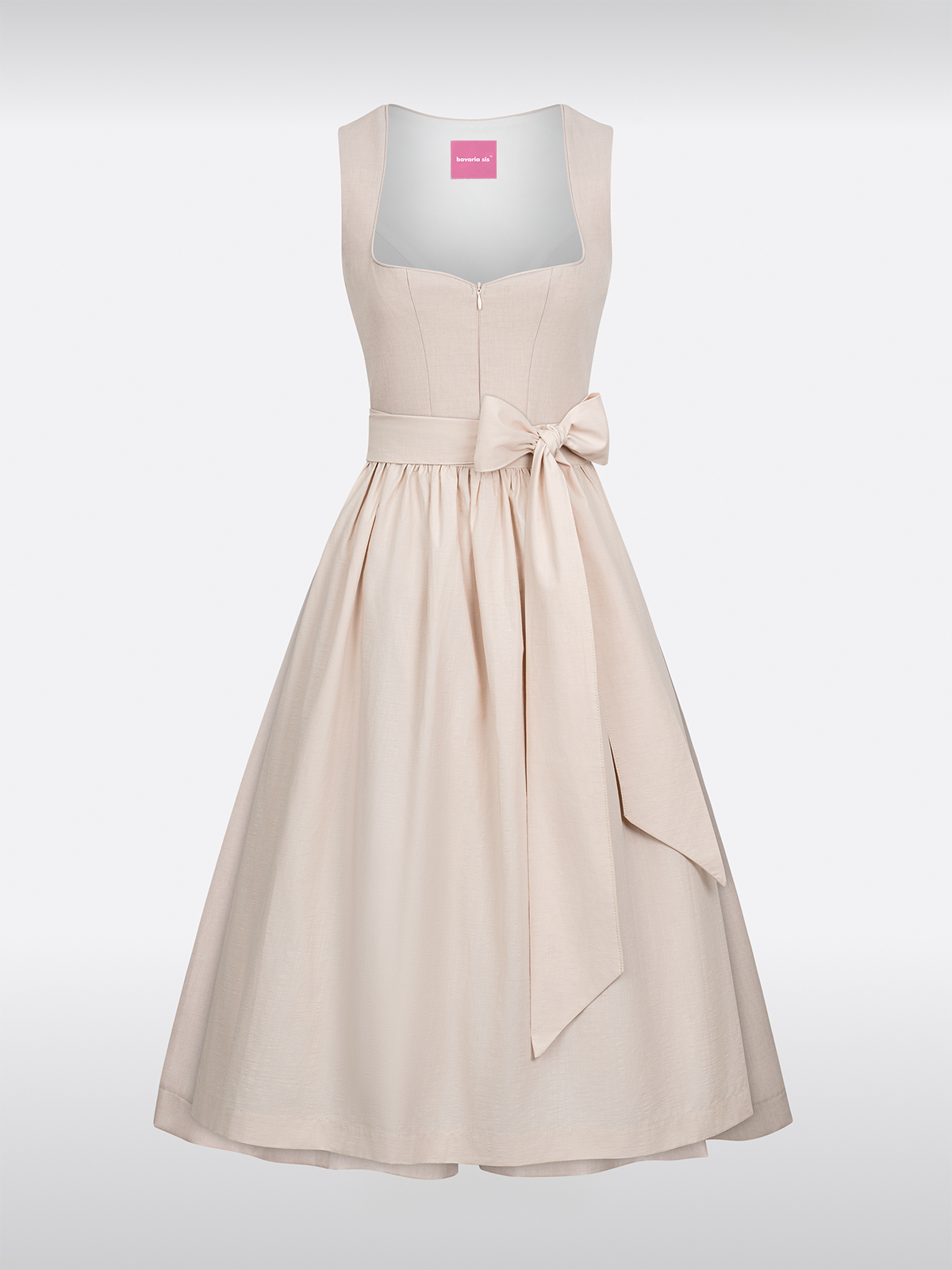Dirndls are a symbol of Bavarian and Austrian traditional costume culture and are characterized by their versatility and individual details. In this article, we'll explore three special types of dirndls: the dirndl blouse with eyelet lace, the suede dirndl, and the velvety gray dirndl.
Dirndl blouse with eyelet lace: Fine details
The dirndl blouse with eyelet lace is a real eye-catcher. The eyelet lace gives the blouse a delicate and more feminine touch. This type of blouse can be combined with both a classic dirndl skirt and more modern traditional trousers. The eyelet lace can be found in various patterns and designs, from simple dots to complex floral or patterned shapes.
When purchasing a dirndl blouse with openwork lace, it's important to pay attention to the quality of the lace. Finely crafted lace made from natural materials like cotton or silk will last longer and also look more beautiful. The color of the blouse can be chosen according to personal preference and the occasion. A white or light blue openwork lace blouse is particularly suitable for summer occasions, while a darker shade like dark blue or brown is suitable for fall and winter events.
Suede dirndl: natural robustness
The suede dirndl is an exceptional and durable garment. Suede has a natural robustness and lends the dirndl a rustic and authentic touch. This dirndl is perfect for those who spend a lot of time outdoors or who want to feel a connection to their farming or mining heritage.
Putting on a
Dirndls suede Requires a bit of practice, as suede is often a bit stiffer than other fabrics. However, over time, it will adapt to the body shape and become even more comfortable. Decorations on a suede dirndl should be kept simple and natural. For example, small leather straps, wooden beads, or horn hairpins could be used to enhance the natural aesthetic.
The velvety grey dirndl: elegance in grey
The velvety gray dirndl symbolizes elegance and tranquility. Gray is a color that combines well with various accessories and can be worn in any season. The velvet material gives the dirndl a soft and luxurious feel.
One possibility, a
Dirndl Velvet Grey A great way to wear it is to combine it with silver or gold jewelry. A pair of simple earrings and a delicate necklace can enhance the elegant touch. The choice of shoes is also important. Leather boots in brown or black can go well with a velvety gray dirndl and complete the outfit.
Wearing and combining special dirndls
If you wear a dirndl blouse with openwork lace, you can combine it with a simple skirt or leather trousers and accentuate it with a narrow belt. A suede dirndl can be worn with a warm sweater underneath when it's cold and complemented with a wide-brimmed hat. A velvety gray dirndl can be worn for both a formal occasion and a cozy evening with friends, and can be complemented with a scarf or coat as needed.
Dirndls for special occasions
The dirndl blouse with openwork lace is particularly suitable for summer parties and family celebrations where you want to create a somewhat relaxed and romantic atmosphere.The suede dirndl can be worn on mountain hikes, hunting events, or even at traditional farm festivals. The velvety gray dirndl is perfect for weddings, theater performances, or other elegant events.
The importance of special materials and details
The eyelet lace on the dirndl blouse, the suede, and the velvet of the gray dirndl contribute not only to the dirndl's aesthetic appeal, but also to its cultural and emotional significance. The eyelet lace symbolizes the delicacy and craftsmanship of handcrafting. The suede recalls the peasant and natural origins of traditional costumes. The velvet lends the dirndl a certain dignity and elegance.
Flashback: The development of these dirndl types
In earlier times, dirndls were primarily practical and functional garments. Eyelet lace was originally used to decorate the edges of blouses, making them last longer. Suede was chosen for its durability and natural availability. Velvet was introduced into dirndl production later, adding a new, elegant dimension. Over time, these elements developed into integral parts of the dirndl tradition and became increasingly creative and decorative.
Personal stories with special dirndls
I remember the first time I saw a
Dirndl blouse with perforated lace wore. It was at a garden party, and I felt like a fairy in a fairytale. The delicate lace fluttered gently in the breeze, and I received many compliments. Later, I wore a suede dirndl on a hike in the mountains. Although it was a bit uncomfortable at first, over time I grew to love it. I was able to see the natural surroundings in a whole new light and feel a part of nature. And then there was the velvet gray dirndl I wore to a friend's wedding. I felt elegant and proud when I walked into the church and took part in the ceremony in that dirndl.
Dirndls in the modern fashion world
These special dirndls have also found their place in the modern fashion world. Fashion designers have begun experimenting with broderie anglaise, suede, and velvet, incorporating them into contemporary designs. You can now find dirndls with asymmetric cuts, modern prints, or even combinations of different materials that combine the dirndl tradition with modern fashion.
The future of these dirndls
The future of these special dirndls looks promising. With growing awareness of cultural traditions and the search for individual, high-quality garments, interest in them will continue. Perhaps new technologies and materials will be developed that further enhance the distinctive features of these dirndls and open up new creative possibilities.
Dirndls as gifts
A dirndl with special features can be a great gift. Whether for a friend, a sister, or your mother, it shows that you care about their cultural connection and their individual beauty. You can even personalize it by adding z.B. attaching a name pin to the blouse or adding a special decoration to the suede dirndl.
The art of cutting dirndls
Cutting these special dirndls requires special skills.The seamstresses and tailors must take into account the special properties of the broderie anglaise, suede, and velvet. Every step, from selecting the fabric to completing the dirndl garment, requires skill and experience. A well-cut dirndl with special features fits perfectly and makes the wearer feel particularly beautiful and confident.
Dirndls and regional culture
These special dirndls contribute to the preservation and transmission of regional culture. They are an important symbol of the cultural identity of the Alpine countries and showcase the diversity and creativity of traditional costume culture. By wearing these dirndls, people can celebrate their regional heritage and inspire others to discover this wonderful cultural world.
Dirndls in art and literature
These distinctive dirndls are frequently depicted in art and literature. In paintings, photographs, and stories, they are portrayed as symbols of rural beauty and cultural diversity. This demonstrates their importance for cultural identity and artistic representation.
The coexistence of various special Dirndls
Whether it's the dirndl blouse with openwork lace, the suede dirndl, or the velvety gray dirndl—they all have their place in the world of traditional costume. Each variation has its own charm and can be worn according to the occasion and individual preferences. This allows women to add their own individual touch while simultaneously perpetuating the cultural tradition of the dirndl.

